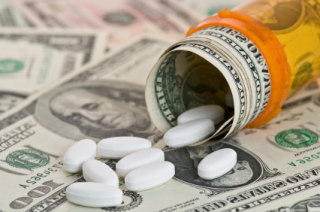In order to understand today’s inflationary environment, you have to understand the government’s response to the COVID crisis. And to understand the government’s response to COVID, you have to understand their responses to past crises.
Let’s start in 1930.
“Liquidate labor, liquidate stocks, liquidate the farmers, liquidate real estate. Purge the rottenness out of the system.”
That was Treasury Secretary Andrew Mellon’s infamous advice to President Hoover as the US economy began to falter. The prevailing thought was that a crisis was necessary to wring out the excesses from the Roaring 20s, so the US government made no effort to mitigate the accelerating decline.
Mellon’s advice is comparable to the ancient practice of bloodletting (often via leeches) to drain sickness from the body. Put the system under duress, and (ideally) casualties will be limited to “the rottenness.”
If that idea had worked, we might refer to the ensuing economic environment as “The Healthy Correction.” Instead, we know it as “The Great Depression.” It forever changed economic policy. We needed to develop new treatments to never let that happen again.
After a few decades of experimentation through various crises, we had a new approach in time for the Great Financial Crisis (GFC) in 2008. Our government was more willing and better equipped to intervene. Government stimulus passed in 2008-2009 totaled roughly $900 billion.
It’s important to note that this wasn’t universally applauded – legitimate concerns about the deficit and inflation prevented larger stimulus. According to economic textbooks, $900 billion of government intervention should have produced more inflation. But other factors including globalization, technology, and demographics proved deflationary. Also, sometimes theories in textbooks are wrong. The post-GFC economy was marked by sluggish growth and stubbornly low inflation, consistently falling short of the Fed’s 2% target. (Which may seem like a good thing, but some level of inflation is a healthy trait for a growing economy. Read why here.)
Along came COVID, and the global economy was suddenly forced into a medically-induced coma. You could argue that at the onset of the lockdowns the most probable outcome was Great Depression 2.0. We needed immediate and drastic action.
If inflation was the primary constraint for not doing more stimulus during the GFC, a decade of trivial inflation loosened those reins. Federal Reserve Chair Jerome Powell pledged to do, “Whatever we can for as long as it takes.” Treasury Secretary Steve Mnuchin was on board, too: “We have a lot of money. We need to get that money in Americans’ hands.”
Quite the shift from Mellon’s philosophy.
What ensued was the most compelling lesson since the onset of the pandemic…
For a slender, nearly 60-year-old man, Chris Rock has an iron jaw.
The US can stop a recession in its tracks.
Make no mistake, that’s what happened. (<– Click links for proof).
US Government stimulus in response to the pandemic totaled over $5 trillion, and it worked. We staved off Great Depression 2.0.
But it wasn’t cheap.
Inflation, after lingering dormant for a decade, has emerged with a vengeance. (Not unexpectedly, though. We’ve been talking and writing about this for over a year. We knew inflation was coming, and it was going to present a huge problem, especially for retirees. Solving the problem requires investing, to grow your wealth at a rate that exceeds inflation!)
And although the economy’s back on track (again, see previous links for proof), consumer sentiment (which measures consumer attitudes about their finances and the economy) has fallen to a level that’s usually reserved for a recession.

So while government response can help break an economic fever, the medicine’s nasty side effects may include inflation and pessimism. (The war in Ukraine hasn’t shown up in the inflation data yet, but will only exacerbate the problem).
The question is: Given the cost, was it worth it?
I think absolutely. Our COVID recession was the shortest on record, and in many respects, our economy is stronger than it was pre-pandemic.
Could we have had a better response? No doubt.
I hope the next time around, the government can take a more targeted approach. We need more filtering to decide who receives stimmy checks. We also need more discernment on PPP funds (countless funds went to businesses that abused the program).
Scalpels, not machetes.
A narrower approach would probably have alleviated some of our current inflation concerns, but the problem is that there are no counterfactuals.
• What if we had skipped the last round of payments directly to taxpayers?
• What if we had “only” done $3 trillion in stimulus?
• How many more businesses would not have survived?
• Where would unemployment and GDP be today?
• How much lower would inflation be now?
Unfortunately, these questions are impossible to answer.
It’s easy to forget that when an economic crisis strikes, the existing playbook is thin, and new plays are drawn up on the fly, under immense pressure. Much like every virus is unique, so is each financial calamity – each one calls for a different response. We have mountains of data and armies of analysts, but there are no perfect answers in the moment. We continue to learn from each crisis, but our economy is an extraordinarily dynamic real-time experiment. No doubt our responses to crises are a work in progress, but at least we are progressing. I bet even Andrew Mellon would take a Tylenol today if he needed to.
Disclaimer: Truepoint Wealth Counsel is a fee-only Registered Investment Adviser (RIA). Registration as an adviser does not connote a specific level of skill or training. More detail, including forms ADV Part 2A & Form CRS filed with the SEC, can be found at TruepointWealth.com. Neither the information, nor any opinion expressed, is to be construed as personalized investment, tax or legal advice.
